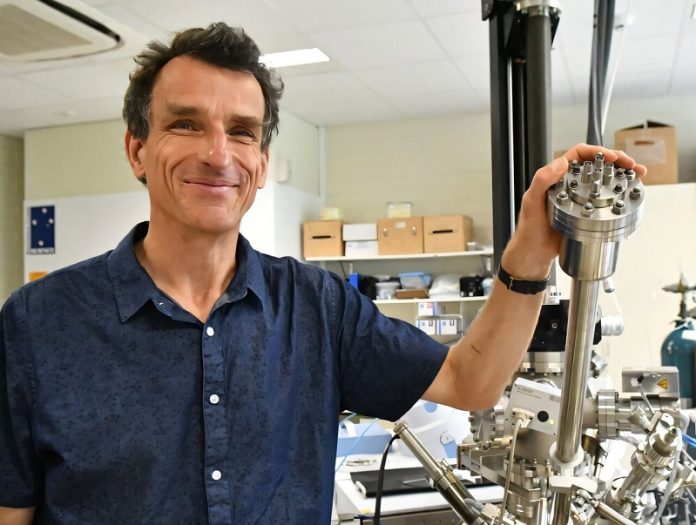
Scientists have made a significant step forward in the quest for cleaner, greener energy by improving the process of producing hydrogen from water using solar power.
In a global study led by Flinders University in Australia, researchers from the US and Germany collaborated to develop a new material for creating sustainable hydrogen through photocatalytic water splitting.
This innovative method uses sunlight and a catalyst to split water into hydrogen and oxygen, creating pollution-free hydrogen energy.
The study focused on a new solar material called “core and shell Sn(II)-perovskite oxide.” When combined with a catalyst developed by Professor Paul Maggard from Baylor University, this material proved effective for the oxygen evolution reaction—a key step in the hydrogen production process.
The findings, published in The Journal of Physical Chemistry C, open new possibilities for using non-polluting energy sources to produce hydrogen efficiently and affordably.
The process has the potential to significantly advance green hydrogen technologies, which rely on renewable energy rather than fossil fuels.
Hydrogen can be produced in several ways, including electrolysis (using electricity to split water) and thermochemical splitting (powered by concentrated solar energy or waste heat from nuclear power).
However, traditional methods often depend on fossil fuels, which emit greenhouse gases.
The new solar-driven process uses sunlight to produce hydrogen, offering a cleaner alternative. By absorbing a broad range of sunlight and driving chemical reactions on its surface, the new material provides a promising pathway for industrial-scale green hydrogen production.
Hydrogen is a versatile energy source with applications in fuel cells, energy storage, and industrial processes. However, its environmental impact depends on how it is produced. Green hydrogen, made without emitting greenhouse gases, could play a crucial role in reducing carbon emissions worldwide.
The tin-based solar material in this study is also notable for its stability and reactivity with water, overcoming a challenge that has previously limited its use in technology.
“This study is a big step forward in stabilizing tin compounds for use in water splitting,” says lead researcher Professor Gunther Andersson from Flinders University.
With input from experts at the University of Adelaide and Germany’s Universität Münster, this work could pave the way for cost-effective, high-performance solar systems to drive green hydrogen production, reducing reliance on fossil fuels and helping combat climate change.



